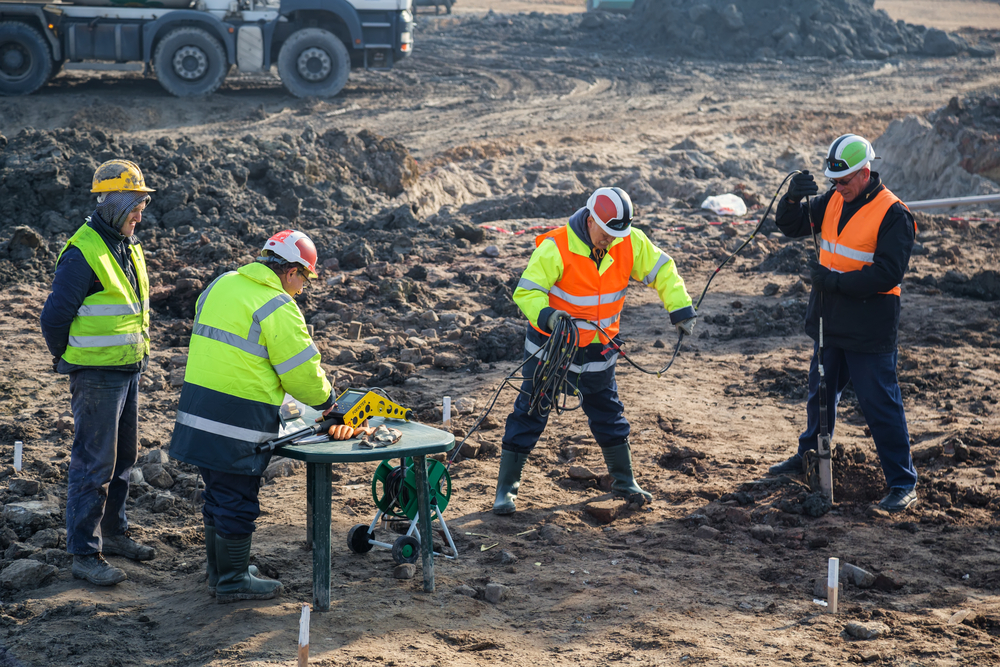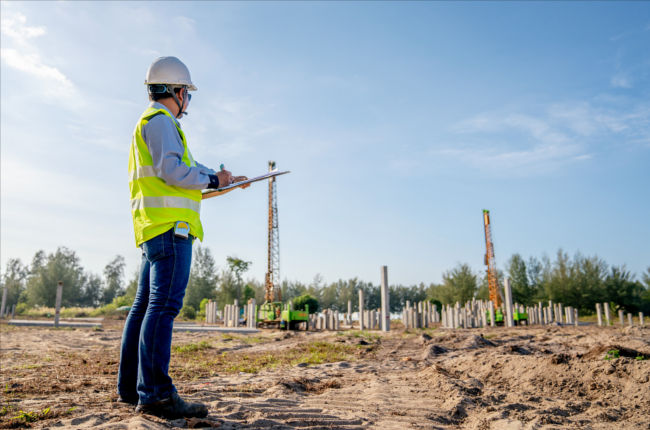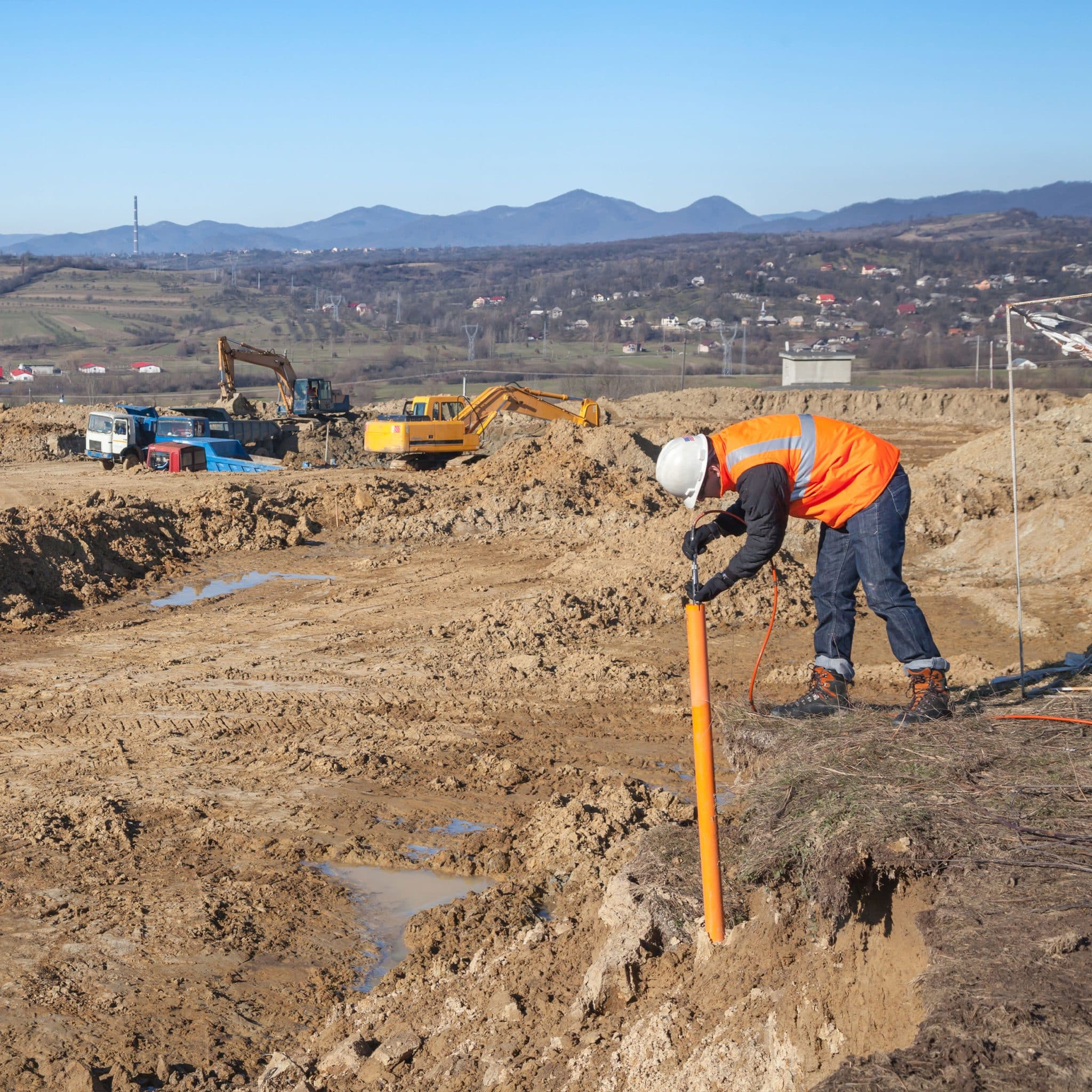Essential Devices and Technologies for Modern Geotechnical Engineers
Wiki Article
Recognizing the Vital Function of the Geotechnical Market in Modern Construction Projects and Framework Development
The geotechnical industry is a keystone of modern building and infrastructure development, giving important insights into dirt actions that straight influence project results. Via advanced soil analyses and cutting-edge design solutions, geotechnical specialists not just ensure architectural integrity yet likewise address sustainability issues amid developing environmental requirements.Relevance of Soil Analysis
Dirt evaluation plays a critical duty in the geotechnical industry, working as the structure for educated decision-making in building jobs. Accurate soil analysis is vital for determining the suitability of a site for various kinds of structures, including residential homes, commercial buildings, and bridges. By analyzing dirt composition, wetness, thickness, and strength content, engineers can expect prospective obstacles and mitigate threats connected with ground instability, disintegration, and settlement.The evaluation process normally entails a collection of examinations and observations that supply crucial information regarding the subsurface conditions. This information educates the style and construction processes, guaranteeing that structures are constructed on strong ground with appropriate support. Furthermore, recognizing the soil account enables engineers to choose proper building approaches and products, optimizing resource usage and reducing expenses.
In addition to making sure architectural stability, soil assessment adds to ecological sustainability. By determining possible contamination or damaging results on bordering communities, designers can implement strategies to safeguard these natural deposits. Generally, thorough dirt analysis is indispensable in the geotechnical field, underpinning the safety and security, efficiency, and environmental obligation of construction projects.
Key Geotechnical Techniques
A range of crucial geotechnical techniques are employed to assess and enhance the stability and efficiency of building sites. One foundational method is dirt tasting and screening, which enables engineers to identify the physical and chemical residential properties of the ground. This details is essential for making informed decisions relating to foundation design and building and construction techniques.Another essential strategy is site characterization, which includes the comprehensive assessment of dirt and rock conditions via techniques such as borehole drilling and in-situ testing. Methods like Criterion Infiltration Examinations (SPT) and Cone Infiltration Tests (CPT) provide important data on dirt toughness and stratigraphy.
Ground renovation methods, such as dirt stablizing and grouting, are likewise important in boosting the load-bearing ability of weak dirts. These approaches can alleviate negotiation and improve general site conditions.
In addition, incline stability analysis is vital for recognizing possible landslide dangers and making sure the safety and security of excavations. This evaluation commonly employs mathematical modeling and limit stability approaches to anticipate dirt actions under numerous conditions.
Integrating these geotechnical strategies right into construction planning not just enhances project outcomes yet also ensures the long-lasting sustainability of framework advancement.
Effect On Building And Construction Security

Additionally, effective geotechnical engineering entails applying mitigation techniques for recognized threats. This may include dirt stabilization techniques, keeping structures, or drain systems to ease hydrostatic pressure. By resolving these elements, building and construction groups can reduce the likelihood of mishaps and enhance employee safety.
In addition, constant monitoring of site problems is crucial throughout construction. Geotechnical tools can give real-time information concerning ground activity and security, enabling timely treatments when needed.
Fundamentally, the geotechnical industry plays a crucial role in securing building projects. By focusing on ground stability and utilizing extensive analysis methods, the geotechnical industry not just safeguards the labor force however likewise adds to the durability and reliability of constructed framework.
Sustainability in Geotechnical Practices

In addition, geotechnical designers are now using advanced modern technologies, such as geosynthetics, which improve dirt stability while reducing the volume of product required. This not just preserves sources yet likewise results in much less waste generation (geo tech engineer). The assimilation of sustainable layout principles right into geotechnical design encourages the usage of renewable energy resources in building processes, additionally reducing carbon discharges
By conducting these analyses, geotechnical experts can create methods that alleviate unfavorable results, making sure conformity with ecological guidelines. Generally, the emphasis on sustainability within geotechnical practices not just contributes to the durability and resilience of framework yet also promotes a liable method to land and source administration.
Future Trends in Geotechnical Design
Advancement is driving the future of geotechnical engineering, as arising technologies and methods improve the industry. The combination of advanced information analytics and synthetic knowledge is readied to revolutionize site examination and danger analysis, enabling engineers to make more informed choices based on real-time information. Moreover, making use of geosynthetic products is acquiring traction, providing sustainable services that enhance soil security and minimize ecological impact.Another substantial fad is the adoption of automated and robot systems for tracking and construction procedures. These modern technologies not just improve precision but also boost safety by lessening human participation in harmful atmospheres. Additionally, the application of Structure Info Modeling (BIM) in geotechnical style facilitates enhanced collaboration amongst stakeholders, maximizing project distribution and reducing prices.
As environment change poses brand-new challenges, the market is significantly focusing on durability and adaptability in style practices, making sure framework geotechnical engineers can withstand severe weather events. The recurring pattern towards sustainability will drive advancement in eco-friendly materials and methods, straightening geotechnical design with broader environmental objectives. Jointly, these fads will certainly shape a much more reliable, sustainable, and durable geotechnical landscape for future jobs.
Final Thought

The geotechnical market is a foundation of modern building and framework advancement, giving critical insights right into soil behavior that straight influence job outcomes. tailings engineer.Soil evaluation plays a vital function in the geotechnical sector, offering as the structure for educated decision-making in building and construction jobs. Overall, comprehensive soil evaluation is indispensable in the geotechnical area, underpinning the safety, performance, and ecological obligation of building and construction projects
Building security is significantly influenced by geotechnical techniques, as the stability and integrity of the ground straight influence the general safety and security of a construction site.In verdict, the geotechnical market is crucial in contemporary building and framework development, supplying critical assessments that make certain architectural honesty and safety.
Report this wiki page